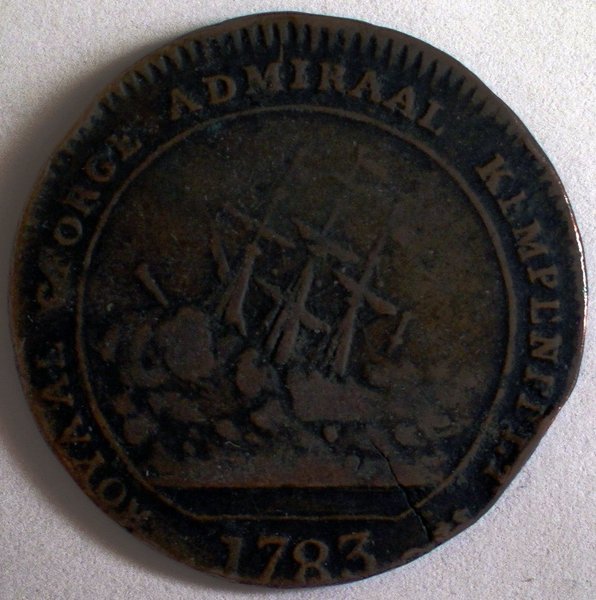Dutch Medallion commemorating the blockade of Gibraltar 1783

- Title
- Dutch Medallion commemorating the blockade of Gibraltar 1783
Dutch Medallion commemorating the blockade of Gibraltar, 1783 and the loss of the HMS Royal George, 1782. Obverse: View of the Rock of Gibraltar and ships engaged. Legend: T GEBLOQUEERDE GIBARALTAR. Exergue: 1783 (Gibraltar blockade). Reverse: The Royal George sinking. Legend: ROYAAL GEORGE ADMIRAAL KEMPENFELT ('Royal George' Admiral Kempenfelt). Exergue: 1783.
HMS Royal George was a ship of the line of the Royal Navy. A first-rate with 100 guns on three decks, she was the largest warship in the world at the time of her launch on 18 February 1756. Construction at Woolwich Dockyard had taken ten years.
The ship saw immediate service during the Seven Years' War, including the Raid on Rochefort in 1757. She was Admiral Sir Edward Hawke's flagship at the Battle of Quiberon Bay in 1759. The ship was laid up following the conclusion of the war in 1763, but was reactivated in 1777 for the American Revolutionary War. She then served as Rear Admiral Robert Digby's flagship at the Battle of Cape St Vincent in 1780.
Royal George sank on 29 August 1782 whilst anchored at Spithead off Portsmouth. The ship was intentionally rolled so maintenance could be performed on the hull, but the roll became unstable and out of control; the ship took on water and sank. More than 800 lives were lost, making it one of the most deadly maritime disasters in British territorial waters.
Several attempts were made to raise the vessel, both for salvage and because she was a major hazard to navigation in the Solent. In 1782, Charles Spalding recovered fifteen 12-pounder guns using a diving bell of his own design. From 1834 to 1836, Charles and John Deane recovered more guns using a diving helmet they had invented. In 1839 Charles Pasley of the Royal Engineers commenced operations to break up the wreck using barrels of gunpowder. Pasley's team recovered more guns and other items between 1839 and 1842. In 1840, they destroyed the remaining structure of the wreck in an explosion which shattered windows several miles away in Portsmouth and Gosport.